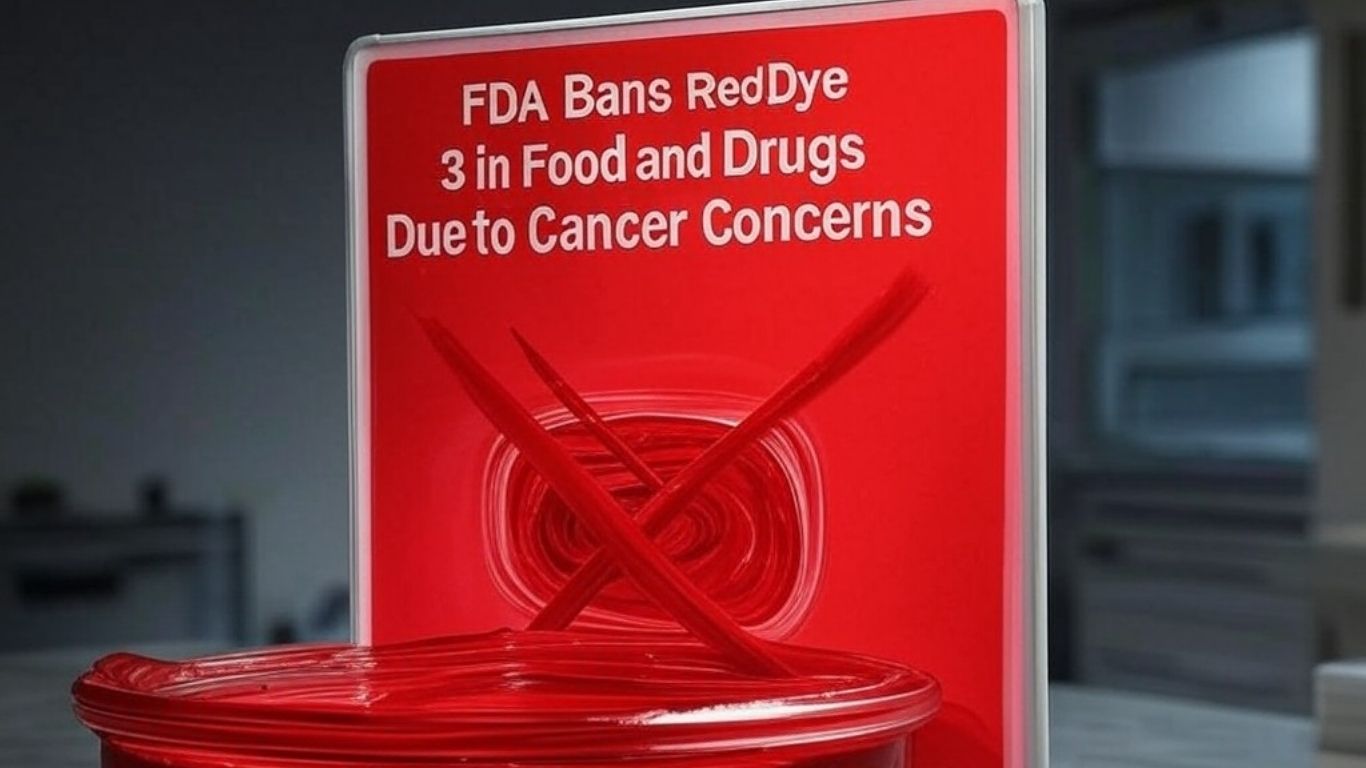The U.S. Food and Drug Administration (FDA) has announced a ban on the use of red dye 3 (chemically known as erythrosine) in foods, beverages, and ingested drugs. The move comes decades after research linked the synthetic dye to cancer in animal studies. The decision follows mounting pressure from advocacy groups and aligns with stricter global standards on food additives.
Key Details of the Ban
- Implementation Timeline:
- Food manufacturers must remove red dye No. 3 by January 15, 2027.
- Drug manufacturers have until January 18, 2028 to reformulate their products.
- Reason for the Ban:
The FDA cites the Delaney Clause in the Federal Food, Drug, and Cosmetic Act, which prohibits the use of color additives that cause cancer in animals or humans. - Background:
Red dye No. 3 has been used for decades to create a bright cherry-red hue in candies, drinks, and some medications. Despite its long-standing approval, scientists raised concerns after studies in the 1990s showed carcinogenic effects in lab rats exposed to high doses of the additive.
Industry and Advocacy Reactions
- Consumer Advocates:
Advocacy groups, including the Environmental Working Group and the Center for Science in the Public Interest, celebrated the FDA’s decision as a “long overdue victory” for public health. - Food Companies:
- Major brands have already begun phasing out the dye.
- Ferrara (maker of Brach’s candies) reduced its use of red dye No. 3 in early 2023, and Just Born (maker of PEEPS) eliminated it in 2024.
- Industry Concerns:
The National Confectioners Association and other industry representatives stressed the need for a strong, science-based regulatory framework.
Health and Scientific Context
- Carcinogenic Concerns:
Animal studies have shown links between red dye No. 3 and cancer in rats, particularly thyroid tumors. Although the FDA states that human exposure levels are significantly lower than the tested doses, the Delaney Clause requires action regardless of the mechanism of harm. - Behavioral Issues in Children:
A 2021 California study suggested that red dye No. 3 could contribute to behavioral problems, such as decreased attention in children. - Global Standards:
The European Union banned red dye No. 3 in most foods in 1994, highlighting the precautionary principle used in their regulatory decisions.
How to Avoid Red Dye No. 3
- Check Labels:
Red dye No. 3 is often labeled as “red 3” or “FD&C Red #3” on ingredient lists. - Limit Ultra-Processed Foods:
Artificial dyes are common in heavily processed foods and beverages. Reducing consumption of these products can help avoid exposure to synthetic colorings. - Medications:
For ingested medications, look for the dye listed under “inactive ingredients” or opt for dye-free alternatives. Always consult your doctor before making changes. - Avoid Other Dyes:
Advocacy groups recommend avoiding numbered dyes altogether, including yellow No. 5 and red No. 40, which have also been linked to potential health risks.
The FDA’s decision to ban red dye No. 3 marks a significant step toward improving food safety in the U.S. However, experts argue that broader reforms are needed to address other potentially harmful additives still in use. While companies transition to dye-free formulations, consumers can take proactive steps by checking labels and choosing less processed options.
This decision moves the U.S. food industry closer to global standards, ensuring a safer food environment for all.















